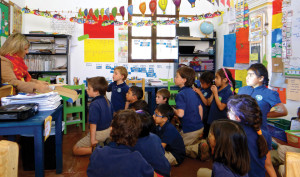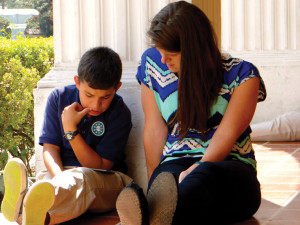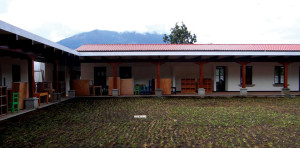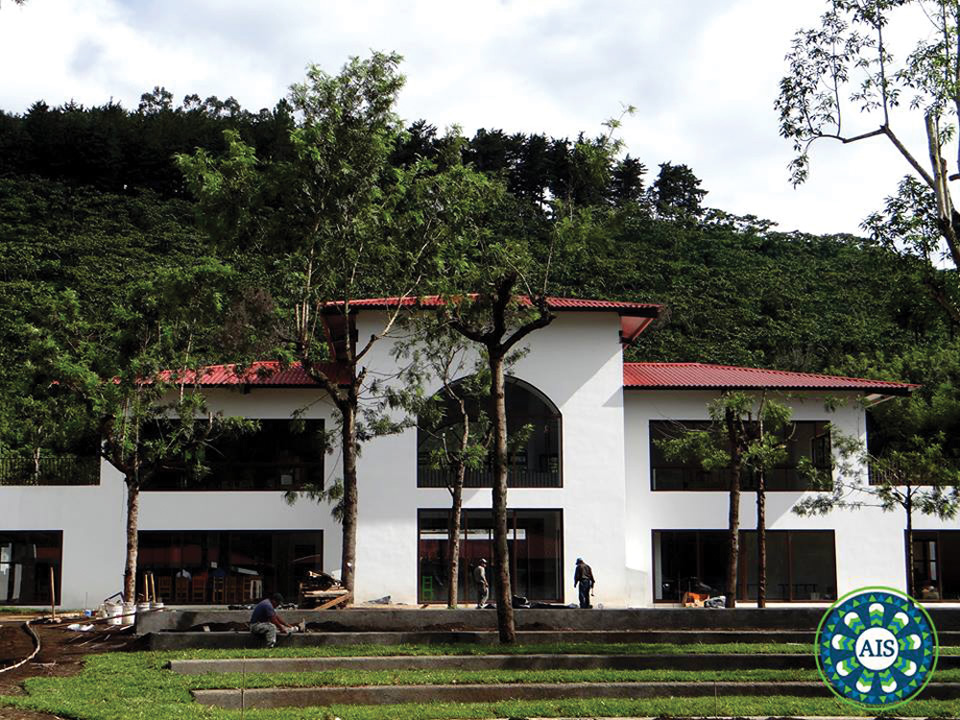EDUCATION Antigua International School
Challenging students to cultivate a love of learning.
Schools serve as model homes, as a place where learning and community coexist, a place where children strive for academic success while developing their personal growth in a supportive environment.
How does the Antigua International School offer a quality education that encourages students to push past boundaries, to think outside of the box, and that supports each and every child in his or her individual journey of self-discovery? By teaching kids how to think, by incorporating differential instruction in the classroom, and by offering continuous professional academic and social support, AIS “challenges students to cultivate a love of learning, lead an ordered life and accept personal responsibility.”
 As part of the vision of the school, AIS teaches kids how to think, not what to think. “Critical thinking elevates thinking beyond memorization into the realm of analysis and logic.”2
As part of the vision of the school, AIS teaches kids how to think, not what to think. “Critical thinking elevates thinking beyond memorization into the realm of analysis and logic.”2
Analyzing, questioning and reasoning are skills acquired through critical thinking that are crucial to an individual’s success not only in school but also in his or her future. Critical thinking promotes curiosity, flexibility and creativity in problem solving.
Learning to ask who, what, where, when and why allows us to understand problems from different perspectives, thereby creating effective solutions. Studies show that kids become better learners when they are forced to explain how they solve problems.
How do you teach critical thinking skills? As Director David Flaschberger explains, AIS creates “open-ended assessments and assignments that force students to come up with their own answers. We also use cross-discipline and cross-age experiences for students to see the connections in their learning.” This skill of thinking critically “makes students discover connection we might have otherwise overlooked.”
It is not uncommon in any classroom around the world to have students of varying academic levels. All students learn at different paces and with different styles. How do teachers accommodate these learning differences among their students?
AIS teachers use differentiated instruction, which tailors teaching to the individual. “Teaching everyone the same thing all the time does a disservice to the advanced and struggling learners. Differentiation means challenging and supporting each student to help them reach their maximum potential,” says Flaschberger.
Learning is multidimensional; it is unique and varied for every human being. Some students are visual learners while others are auditory learners. Some students work better in groups or with partners than others. “With … various methods of assessments, our teachers know their children well and know how to meet each one of them where they are, instead of using a one-size-fits-all strategy. Our teachers are trained to use data and to create groupings that differentiate the students without labeling them,” explains Flaschberger.
 The AIS student body is very diverse. With students coming from over 20 different countries and from varying educational backgrounds, it is without doubt that the academic levels and learning styles in each classroom differ. Teachers in differentiated classes must address varying talents, interests and academic levels. In doing so, teachers grow close relationships with their students and “approach teaching more as an art than as a mechanical exercise.”
The AIS student body is very diverse. With students coming from over 20 different countries and from varying educational backgrounds, it is without doubt that the academic levels and learning styles in each classroom differ. Teachers in differentiated classes must address varying talents, interests and academic levels. In doing so, teachers grow close relationships with their students and “approach teaching more as an art than as a mechanical exercise.”
One of the many unique qualities of AIS is the devotion that the teachers, staff and overall vision of the school have for each child; the founding members understood from the beginning the importance of getting to know the whole child, inside an academic setting as well as in the child’s natural environment. To best support and nurture our students, the AIS Support Program has helped build a bridge between the home and the school.
The Support Program includes classroom observations and meetings with parents and teachers in order to set personal, measurable goals to students. These goals serve as academic targets for students to achieve while being able to gauge their progress. Continuous professional support in academics as well as in the personal and social realm of a student’s experience at AIS creates an environment where the students feel safe pushing boundaries and striving for their personal maximum potential. Another aspect of the Support Program is the home visits.
The Support Program team conducts parent and child interviews to get to know each student and his or her family. Information gathered through these one-on-one interviews is used to support each child and to anonymously inform staff, administrators and board members on ways to improve the AIS educational experience.
Thought-provoking instruction that creates self-empowered individuals, teaching that fits the learning styles of the individual student, and a supportive and encouraging educational environment are essential qualities that make AIS unique.
In order for students to be pushed past boundaries, to become self-assertive, to question, rationalize and share information, they must learn how to think critically and creatively while learning to accept personal responsibility, all of which will empower them to transform Guatemala and the world.
 AIS opened its fourth academic year in September with 205 students in PreK – 12th grade, in a new, state of the art, campus on Ruta Nacional 14. To learn more, visit www.antiguais.org.
AIS opened its fourth academic year in September with 205 students in PreK – 12th grade, in a new, state of the art, campus on Ruta Nacional 14. To learn more, visit www.antiguais.org.
For admissions information, contact Karla Cordero at: admissions@antiguais.org
AIS is a not-for-profit foundation committed to providing an internationally focused, liberal arts education to all who seek it regardless of economic or social status. Fifty percent of AIS students receive scholarship funds to attend. To make a contribution, visit www.antiguais.org/make-gift.

Pingback: Antigua International School Inaugurates New Campus | Revue Magazine